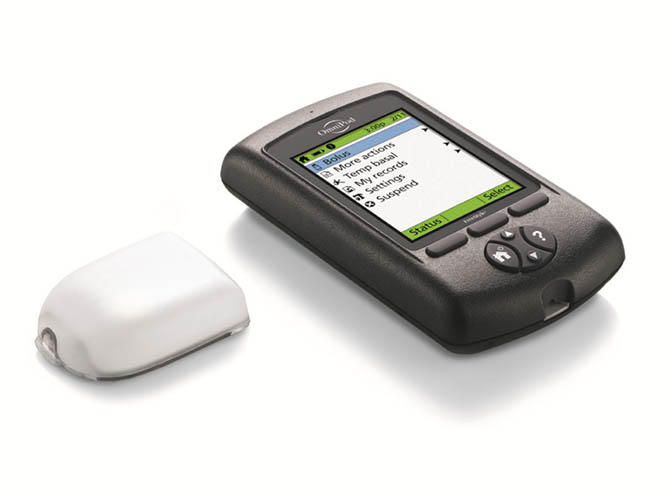Before Insulet Corp. (PODD) had their initial public offering, they were a startup company with a great idea. Knowing that they needed engineering help to realize the ultimate diabetes solution, they engaged BCA to develop the user interface and software for their custom electronic Personal Diabetic Monitor, or PDM.
Context
The PDM handheld device communicates wirelessly to Insulet’s self-adhesive disposable pump, which has enough insulin for three days. The system is known as the Omnipod Insulin Management System. It is the first insulin delivery system that completely hides the pump from public view.
BCA engineers worked together with Insulet to define the look and feel of the Ominpod product interface. Using an iterative approach to LCD screen design and how doctor and user functions would work, we eventually defined how the system should work. BCA utilized their custom embedded kernel to generate the software. One of the features of this kernel is that it also runs on the windows platform simulating the hardware. Thus, before hardware was available, Insulet marketing people were already reviewing and using the interface. Over the years we have added numerous features to this system, including a food database, suggested bolus, color LCD screen, and numerous diagnostic, analysis, and manufacturing tools.
Today, Insulet is a public company that has continued to innovate with a successful product. They are poised to meet the growing demands of diabetes care and BCA will continue to be Insulet’s right hand man not only when it comes to the software contained in their handheld, but also supporting software and documentation.
Solution
BCA developed the software for a reusable remote controller with a graphical user interface, communicating with the pump over an RF link. BCA was responsible for:
- Refining the user interface for the remote.
- Writing the first revision of the Software Requirements Specification
- Designing the operating system for the remote
- Designing and implementing the application for the remote
- Performing hardware hazards analysis
- Developing FDA Documentation
FDA documentation included:
- Design specifications
- Unit testing scripts and execution
- Formal documented code reviews
- Traceability between design and requirements
To facilitate development, BCA wrote a Windows simulator (SimGUI) for the remote controller. This program was used to develop a majority of the ‘C’ code base of the application, which then ported directly to the embedded device. A graphical ‘skin’ was used to mimic the exact appearance and operation of the controller. It was also used to demonstrate the device to prospective investors and board members.
Class II medical device.

